If you are looking for a guide to the best language learning methods and key principles of mastering a foreign language, then you have come to the right place.
At Lingopie, we pride ourselves on making language learning accessible, affordable, and fun. With reference to a recent interview with our CEO David Datny, this post will discuss the method of learning a second language faster through video.
The Key Principles of Language Learning
Learning a foreign language takes time. This is a key principle to keep in mind when approaching a new language: perseverance is essential.
Language learners will not speak fluently after a month of watching foreign language TV or listening to radio programs. However, every day they engage with a foreign language they will build their listening skills and language acquisition.
Another key principle to keep in mind is that language learners should feel motivated and enjoy developing new language abilities. It is nearly impossible to learn a language that is not relevant to your life and does not excite you.
With Lingopie, you can learn a language through media that you find engaging and interesting.

Our Methodology and Approach to Language Learning
In a traditional classroom, it is common practice to learn a language through textbooks, repetition and rote memorization (the process of storing information in long-term memory through sheer repetition).
The issue with this methodology is that students often learn to recite rather than build the skills necessary to speak fluently and understand the actual meaning of words and phrases.
Meanwhile, at Lingopie, we have adopted a more organic, efficient and enjoyable means of learning a new language. The method our platform facilitates is developing language skills through engagement with videos.
So, how does learning through video work?
Language Learning through Video
The Lingopie methodology is known as the ‘binge-learning method’. As CEO David Datny attests, you do not need to love languages to learn one. It is enough to engage with entertaining TV and movies in the languages you are learning. You will demonstrably improve your ability to speak and understand spoken language.
Lingopie is also designed to help you discern cultural differences and gain “an insight into colloquialisms, slang, and any unique grammar,” Datny states. This learning occurs while you are absorbed in the media and having fun.
Our platform offers over a thousand five hundred titles across nine languages. Similar to Netflix, you can browse movies and shows under categories like Popular Now.
Renowned Language Learning Methods:
You might not expect it, but Lingopie’s binge-learning method actually incorporates and supports several world-renowned language learning techniques, such as Ahn’s Method, which promotes learning grammar rules through exposure rather than studying them explicitly.
We will detail this method below, as well as several others, and show that Lingopie’s binge-learning method is heavily based in science, as well as fun.
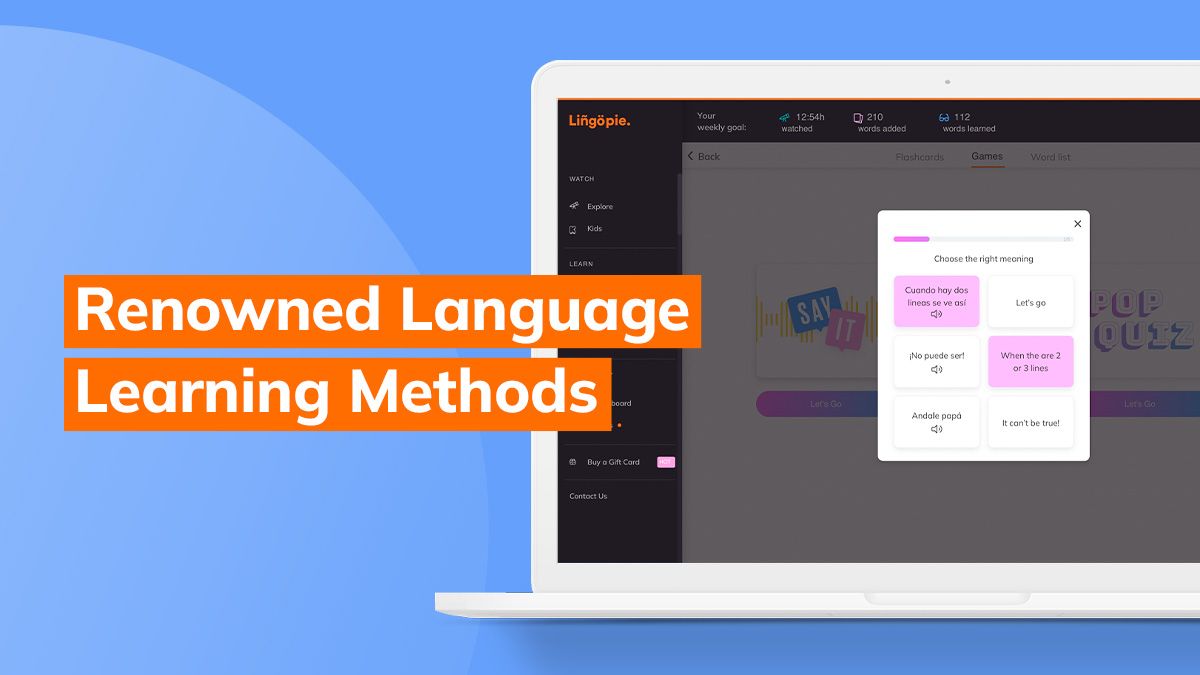
Ahn's Method
An aspect of language learning that often deters beginners is the necessity to understand grammar rules in a new language. Ahn's method recognizes this and focuses instead on learning foreign words and phrases, and picking up grammar rules organically.
Listening to a native speaker’s diction, for instance by streaming a TV show on Lingopie, introduces grammatical points naturally and is proven to be a highly effective form of language study.
The Manesca Method
This language learning method involves introducing one new word at a time and slowly building a simple phrase. The language learner repeats each word and phrase until, through repetition, they are learned.
When streaming on Lingopie, focus on phrases or words that are repeated a lot. Through the context of the show, build an understanding of the meaning until you can use them effortlessly.
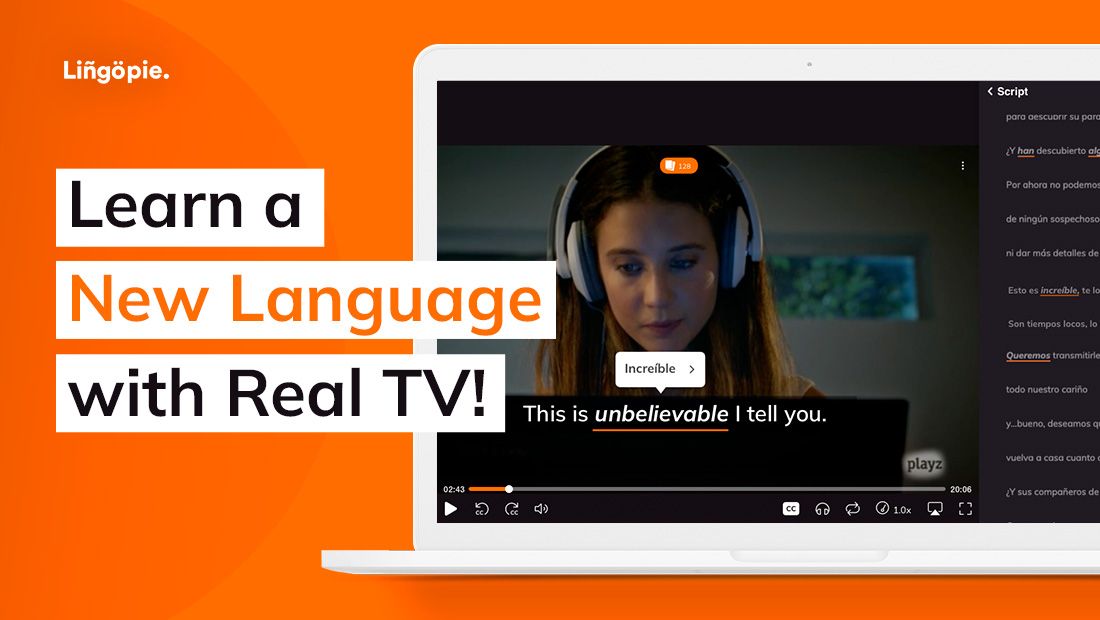
The Gold List Method
When attempting to learn new words and commit them to memory, the Gold List Method is invaluable.
This method employs spaced repetition, which is the idea that to be remembered, a word has to be recalled several times at intervals. This process is repeated until all the words on the list are removed.
As above, you can begin to note vocabulary that comes up regularly in Lingopie shows and movies. This will help you with the platform’s level-specific quizzes.
The Foreign Language Shadowing Technique
Speech shadowing is an advanced technique to learn a new language, usually employed to improve fluency. This method also aids correct pronunciation and intonation in spoken language.
The Lingopie platform is designed to support this exercise. You can pause, go back and repeat sections of dialogue, the shows are chosen specifically with language learning in mind, and every show or movie tells you which country the film was set in, so you can choose the accents and slang you will be parroting.
Aural Learning
Auditory learners acquire language best through hearing directions and giving verbal answers. These language learners will retain vocabulary from hearing it spoken aloud more effectively than seeing it written.
Auditory learners need to take regular breaks from streaming, as they can be distracted easily by background sounds.
It is important to note that most people will have more than one learning style, so it is possible to be an auditory learner as well as a visual learner, for instance.
Visual Learning
Visual learning is a method in which a language is learned through the use of images, colors, and interactive learning devices.
They will learn a language best through the use of foreign language subtitles when streaming on Lingopie, and benefit from the interactive features on the platform, such as the flash cards that come with target language, videos and graphics, and the quizzes.
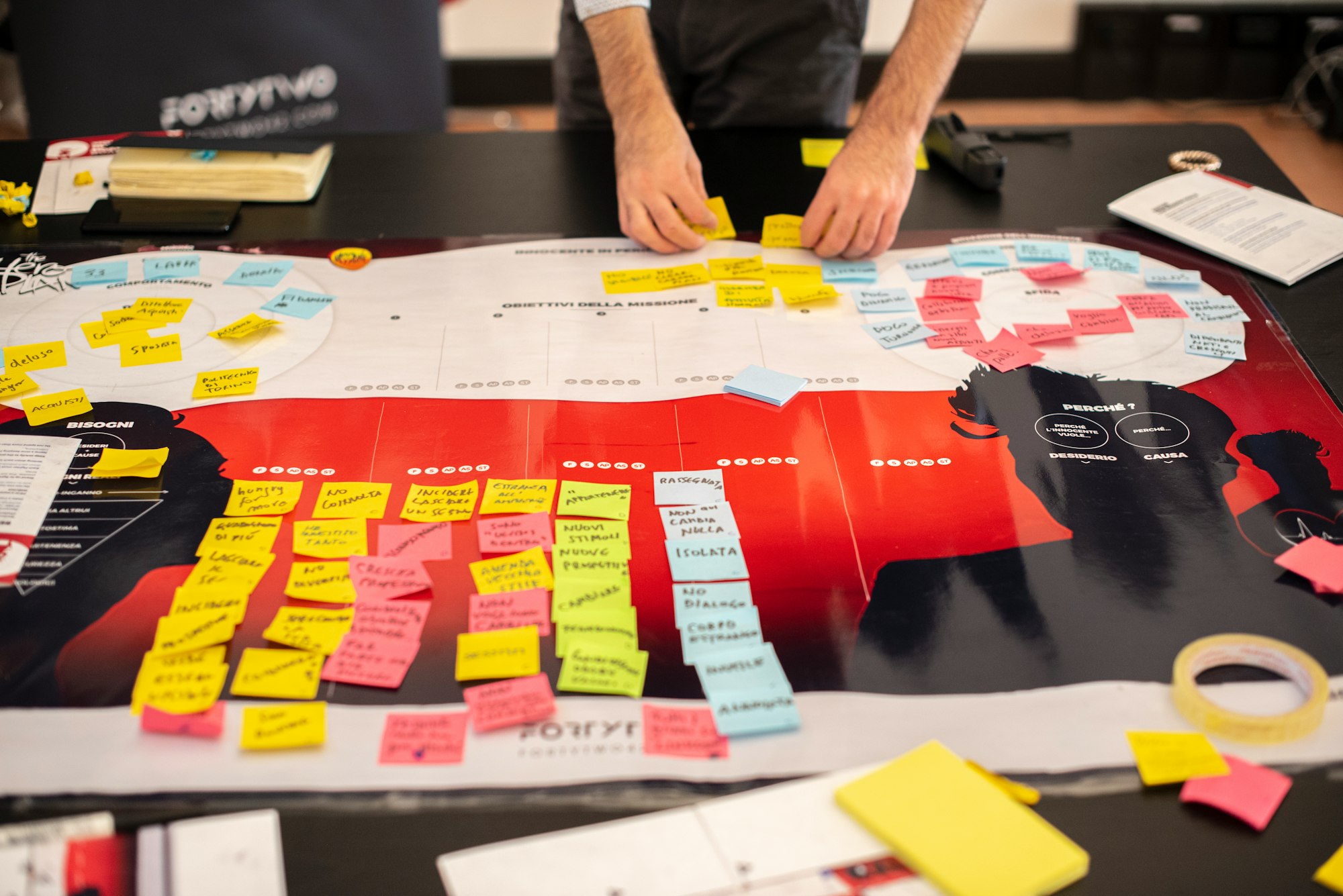
The Science of Target Language Flashcards: How do these work?
This method comprises learning a language through flashcards; small cards sporting new vocabulary.
You can pair these new words with images, if you are a visual learner, or write a vocabulary question on the back of the card to prompt the correct response. Remember to write only one question per flashcard, as each card should correspond to one target language word.
As detailed above, Lingopie offers digital interactive flashcards on the platform, or you can make your own. Vocabulary acquisition through flashcards employs spaced repetition, which allows you to build correct memory traces between the words and their meanings and retain them in your long term memory.
You can revise any target language learned previously with the use of flashcards, so they are great tools for Lingopie quizzes. If you notice you are forgetting the same words repeatedly, make them into flash cards.
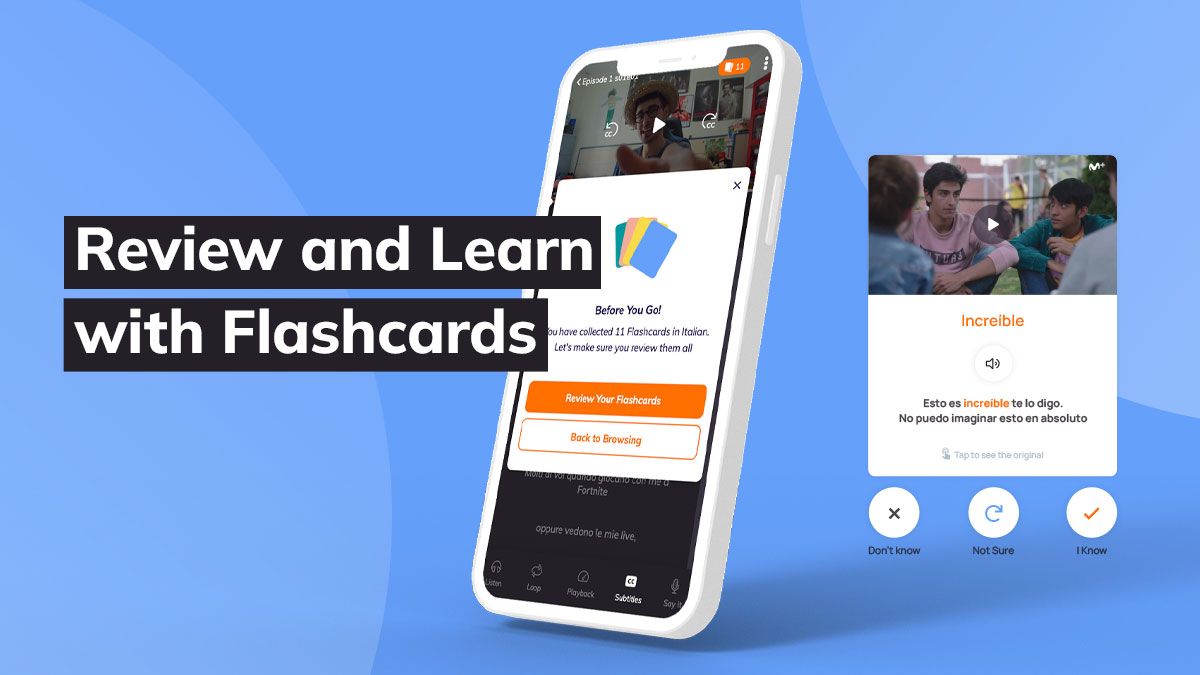
Staying Consistent: Our 5 Cs of Language Learning
When learning other languages, there are five concepts will help motivate and drive the learning process. However, these can also be the biggest challenge of language learning.
Lucky for you, Lingopie has packed these concepts, known as the 5 Cs, into one innovative and engaging platform.
Consistency
The best language learning strategies involve regular practice.
Consistency is essential for optimal learning as you develop a routine and your brain becomes accustomed to the language.
Streaming a binge-worthy show is a great way to stay consistent with language learning, as you will always want to know what happens next. Lingopie encourages consistency through its gripping shows and motivational quizzes.
Commitment
There comes a time in everyone’s foreign language journey when their progress seems to plateau and the motivation to continue wanes. The next important concept is commitment. Stay committed to learning, growing and persevering.
Another great feature of Lingopie is that it shows your all-time progress at the top of the page. You can see how many hours you have watched, how many flashcards you have added to your pack, and how many words you have learned. When you think you are not doing enough, look at how far you have come to stay committed.
Communication
Having the confidence to converse with a native speaker in their native language is a huge asset when you want to learn a language.
Try to identify tone, gestures and thinking words, such as “well” and “anyway” in English. At any point, if you do not understand a word spoken by a character, you can pause the program and have Lingopie speak the word to you.
Once you grasp these natural elements of verbal communication you will begin to sound more like you do in your native language. However, this is a long process.
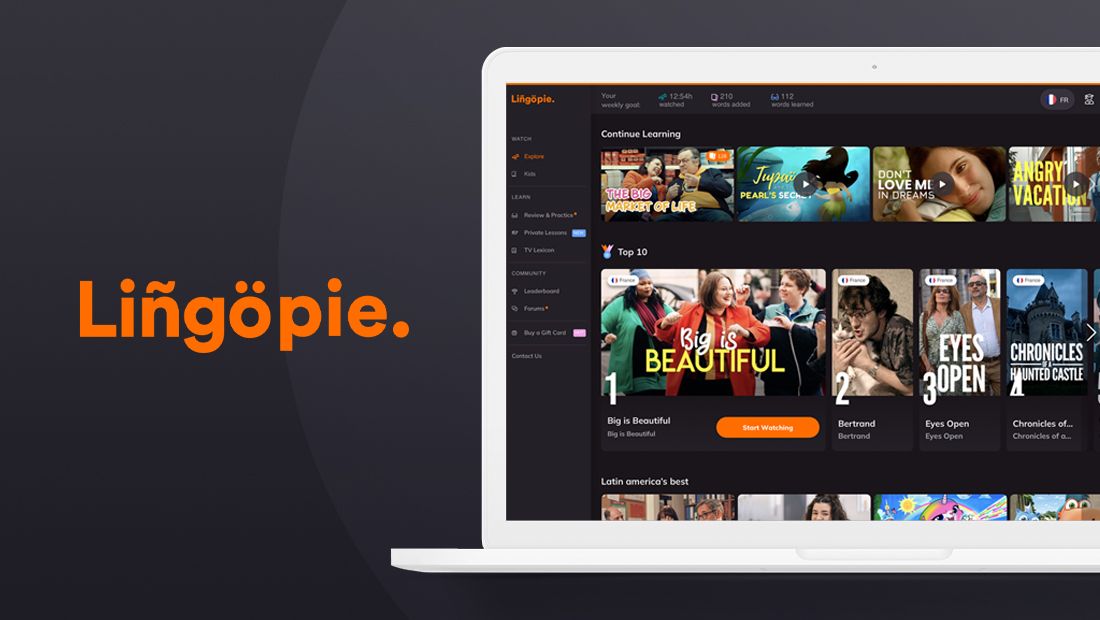
Culture
When learning a new language you should also make an effort to understand the cultures associated with said language. The language's history, traditions and literature potentially span several countries or continents.
By watching TV and movies set in countries where Spanish is spoken, for instance, you can take in the culture of different Spanish-speaking communities. This will allow you to develop listening comprehension and basic vocabulary as well as cultural awareness.
Community
It can be very social to learn a language and the more social you are, the faster you will improve.
Learners share their language learning journey with others by reaching out online to their fellow Lingopie users through the platform’s forums. Lingopie also holds regular webinars.
There is also a Lingopie leaderboard where you can engage in healthy competition with other language learners. You get points for hours watched, flashcards added, and flashcards mastered.

Summary: The Lingopie Methodology & Language Learning Techniques
If you have been looking for a fun and natural method for learning a language, you should take positive action toward this goal and sign up for a free trial with Lingopie.
Through immersion in native shows and movies, you can pick up on cultural differences, accents and important words and phrases from people speaking their mother tongue.
Moreover, Lingopie offers opportunities to test your progress and quiz you on previously learned words and grammar while remaining entertaining.
To maximize your potential to learn a language, you can adopt tried and tested techniques for retaining information, such as the use of flashcards. And, finally, at all times you should keep in mind the 5 Cs: consistency, commitment, communication, culture and community.




![How to Learn a Language by Watching TV [7 Easy Steps]](/blog/content/images/2022/10/Blog-imgs.webp)

![5 Official Spanish Language Tests To Show Your Proficiency Level [Guide]](/blog/content/images/size/w300/2025/06/Spanish-Language-Tests.jpg)
![Why Memorizing Spanish Words Won’t Make You Fluent [Tips]](/blog/content/images/size/w300/2025/06/how-to-practice-spanish-vocabulary.jpg)
![How to Improve Your Polish Conversation Skills [5 Best Tips]](/blog/content/images/size/w300/2025/06/improve-polish-conversation-skills.jpg)
